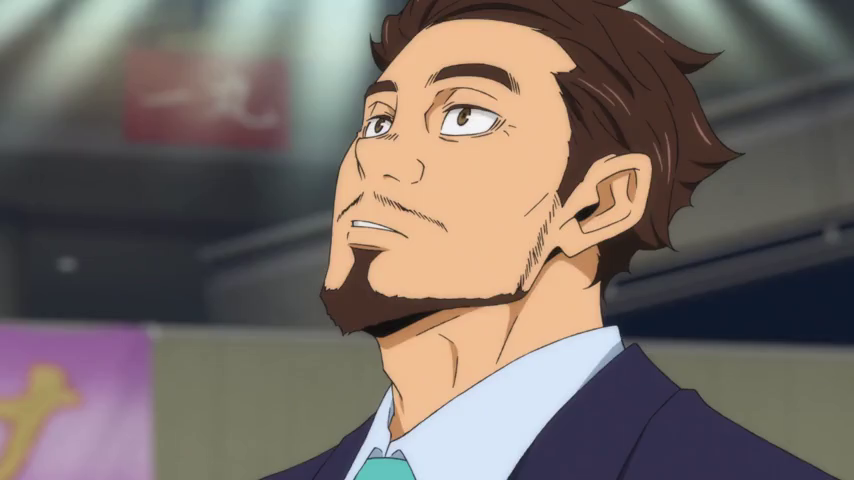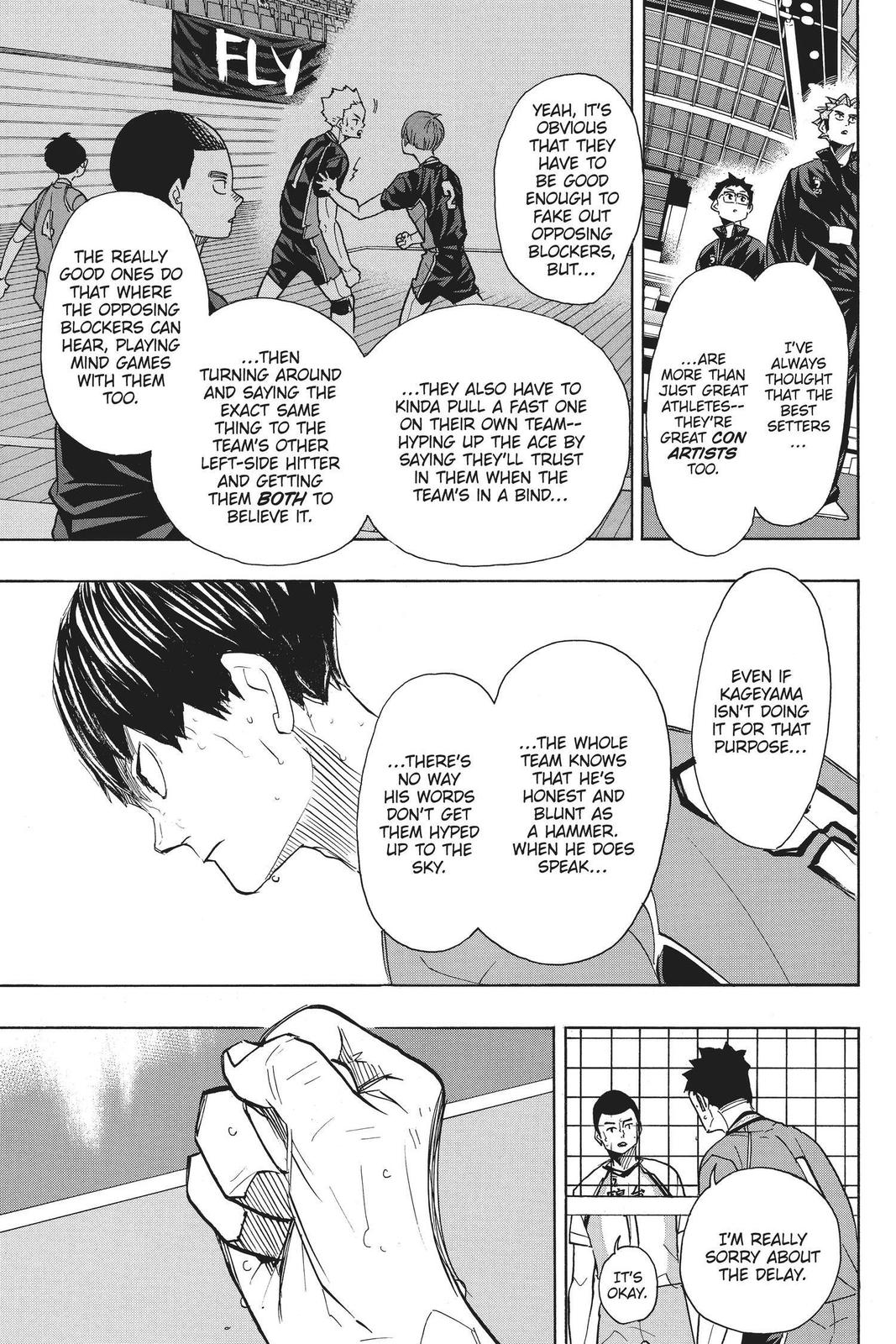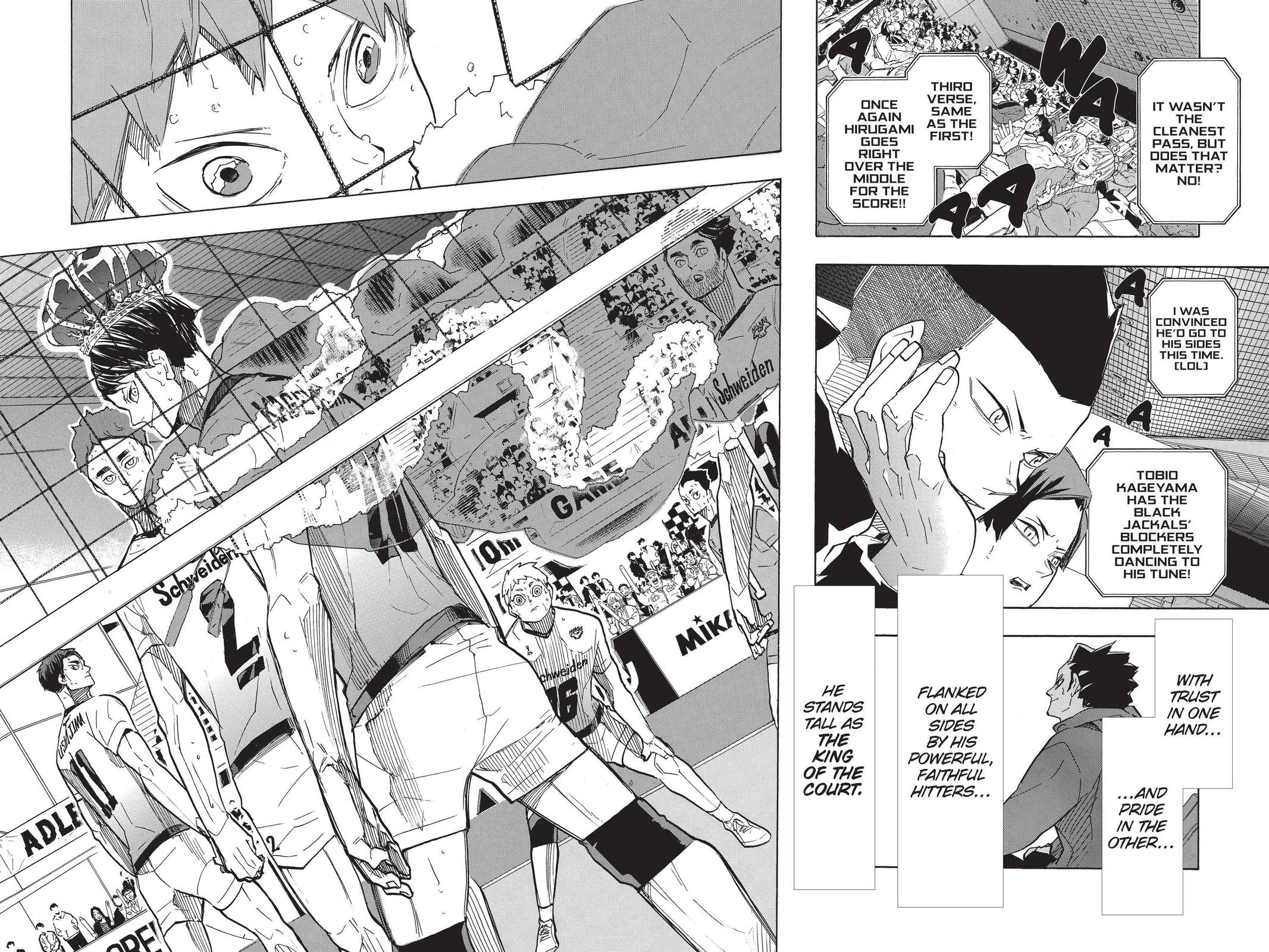What criteria determine whether a player is invited to the U-19 Youth Camp?
Why was Chigaya Eikichi selected, but not Oikawa? And why weren’t Yaku or Osamu invited either?
We will try to analyze it.
In this analysis, we will explore these questions logically and rationally, based on the story context.
Please note, this analysis may not be 100% accurate to real-life procedures, but it aims to be as reasonable as possible matches with the story.
Let’s use the 5W+H method to find the answer.
How Are Players Selected?
There is a selection process rather than simple registration. The decision-makers are centralized—mainly the Youth Camp coaches with the help of the Japan National Team (JNT) coach.
However, Coach Hibarida only appears during national team activities, so the selection likely happens before the Spring Tournament, led by the Youth Camp representatives.
The closest significant event to this timing is the Final Prefectural match held in November, where the final team is chosen to represent the prefecture in the Spring Tournament.
Why That Timing?
Why is the selection held at this specific time?
Why not select players during the Inter-High Qualification (July–August), which would allow players like Oikawa to be considered?
It is certainly not limited to Oikawa alone. The most logical reason is fairness: the selection before the Spring Tournament allows new first-year players to compete under more equal conditions.
Since the Inter-High occurs just a few months after the new school year starts, some new players might not yet have secured regular positions on their teams.
In short, it is highly likely that qualifications happen during the Final Prefectural match, though earlier selections are not entirely ruled out. This answers the "Where" and "When" questions.
This implies that to compete for a spot in the U-19 Youth Camp, a player must participate in the qualification matches and showcase their skills.
Bench players have a much lower chance of being chosen.
Why Osamu Wasn’t Selected?
This explains why Osamu wasn’t selected despite having skills comparable to Atsumu. Chapter 279 and chapter 247—where Karasuno analyzes the Inarizaki match—are telling us that Osamu did not play during the prefectural match when Youth Camp representatives were present.
What About Chigaya Eikichi?
If we look at the players chosen, there might be questions:
Q: How was Chigaya Eikichi selected?
Q: Why were Sakusa and Motoya both chosen even though they are from the same school?
Q: Can a prefecture have two players qualified?
Q: Why weren’t Oikawa and Yaku selected?
The last question will be addressed in a follow-up analysis. For now, let’s focus on the others.
First thing to remember, just because Chigaya Eikichi doesn’t get as much spotlight as Oikawa (Seijoh match), Ushiwaka (Shiratorizawa match), or Atsumu and Aone (their respective matches), it doesn’t mean he is no good.
Think of it like the Argentina national team: they managed to beat Japan in 2016 even before Oikawa’s debut, implying strong players existed even if they weren’t highlighted in the story.
(This will be further explained in the Olympic analysis.)
Where Do These Players Come From?
Back to the Youth Camp topic—we need to see where these players come from. Chigaya is from Shinzen High School, which is not part of Tokyo. It’s been confirmed by Chigaya himself that Shinzen reached the Final Prefectural match but didn’t win.
This suggests that each prefecture might only get one ticket for the Youth Camp.
This seems to contradict the situation with Sakusa and Motoya, who both qualified despite being from the same prefecture.
So, which is true?
Before concluding, consider why Nekoma, Fukurodani, and Itachiyama qualified for the Spring Tournament even though they are from the same prefecture.
The answer lies in special treatment for large prefectures like Tokyo, which are allowed multiple representatives. (Better assume it also applies to the Youth Camp qualification rules) This explains how both Sakusa and Motoya could be selected for the Youth Camp despite coming from the same prefecture.
What Is the U-19 Youth Camp?
Previously, we talked about how, when, and where the qualifications for the U-19 Youth Camp happen.
This is the next part of that discussion, so make sure you’ve read the earlier explanation to avoid any confusion!
So, what exactly is the U-19 Youth Camp?
Season 4 made it crystal clear: the U-19 Youth Camp is all about preparing players for the World Championship—not the Spring Tournament (the national championship). In real life, there are many tournaments besides the Olympics, so the Youth Camp’s focus is on international competition.
This clears up why Chigaya Eikichi got picked even though his team didn't manage until Spring Tournament. The Youth Camp coaches recognized his individual skills and abilities.
Kageyama’s Future in the Youth Camp?
But, Tsukishima's words might be intriguing. Why did he say there's no guarantee that Kageyama will "stay till the end" like Ushijima?
Remember, the Youth Camp’s goal is to groom players for the World Championship. That means trainees must keep and improve their score until they’re officially picked for the Japan National Team (JNT).
Tsukishima’s “staying till the end” is about maintaining that consistency.
And Tsukishima is skeptical. He sees mental struggles in Kageyama’s past that might hold him back. Even though Kageyama’s improved, Tsukishima still doubts him—and that’s probably why he’s annoyed by Kageyama’s sudden change after the Youth Camp.
New Rules for Youth Camp: Age Limit
From what Ennoshita said, only players who are two years or more younger than 19 can qualify. That basically kicks out all third-years.
There might be some mistranslation about the age being 15–16. Since the camp happens in early December, if the cutoff was the camp date, only Kageyama, Chigaya, and Sakusa would qualify.
But Atsumu and others are there too, so the age limit probably applies to the start of the year or school year. In other words, if you’re 15 or 16 at the beginning of the year, you can still be selected—even if you turn 17 by December. This explains why Yaku, Oikawa, Kuroo, Iizuna, and other third-years are missing from the camp.
Was the Rule Change to Exclude Oikawa?
Hold up! Don’t jump to conclusions.
To understand why they made these rules, let's put ourselves in the Youth Camp Coaches's position.
As mentioned before, the Youth Camp is serious business. They want players who are dedicated and plan to keep playing volleyball. Players who don’t have that passion—like Osamu—won’t make the cut because it wastes everyone’s time.
Third-years are at a crossroads, deciding their futures. Some might not see volleyball as their path. The story shows this clearly.
So, to avoid losing players mid-way, coaches prefer younger players to build their skills and mentality early on. Hence, third-years are out of the running.
What About Oikawa and Yaku in Their Earlier Years?
To be picked, players must make it to the final prefectural match as explained in the first analysis. Yaku and Kuroo from Nekoma, who have only just become successful this year, probably didn’t make it that far in their second year.
Oikawa and Seijoh, however, consistently reached finals in their first two years, so Oikawa and Iwaizumi had a strong shot.
But why did Ushijima get picked over Oikawa?
Oikawa vs Ushijima: Same Yet Different
If we compare Iwaizumi and Ushijima, Iwaizumi’s serve is solid but nothing extraordinary. Despite being a great ace, he’s still a step below Ushiwaka.
Next are Oikawa and Ushijima, who share many similarities. Both have strong serves. Oikawa's serve is even considered to have more control than Ushijima’s. Both were born with more athletic bodies than most others. They are both volleyball nuts.
Oikawa is an all-rounder, meeting the bare minimum to be selected. (That’s why, as unique as Hinata is, he hasn’t quite made the cut yet).
Oikawa also brings the “height and power” Japan craves, just like Ushijima. So, could Oikawa have made it if he stayed in Japan?
(We’ll explore that in Oikawa’s special series.)
Why Oikawa Still Didn’t Make It
Then, why didn't Oikawa get chosen like Ushijima?
Simple: position.
Ushijima is a spiker—and you need three spikers on court, so their chances are triple.
Setters? Only one per match.
That means Oikawa faces tougher competition, especially if there’s another setter of equal caliber.
Putting out Kageyama from the picture, since he was still in middle school, or Atsumu since we didn't get enough information of the former Inarizaki setter, is there another setter as good as Oikawa?
Yes! Oikawa is not one-of-a-kind, which means there are other setters out there who are also realistically ideal.
Who?
It’s Iizuna Tsukasa, Itachiyama’s setter. Why him out of many setters?
Ever wonder why Inarizaki never beats Itachiyama despite having top players like Atsumu, his copy Osamu, one of top five ace Aran, a skilled libero, and a unique bone Suna? Don’t forget Gin—he’s no pushover either. All of Inarizaki members are confirmed to be individually skilled.
Further analysis, Inarizaki-Itachiyama situation is like Karasuno-Seijoh. Karasuno had a better setter than Oikawa skill-wise, which Oikawa admits. (Please note that setting skill and being a setter aren’t the same—more on that later.)
Inarizaki’s setter also outshines Itachiyama’s in skill.
Both Inarizaki and Karasuno's (ver. season 1–2) playstyle is very individualistic, while Seijoh focuses on teamwork. We saw Karasuno lose to Seijoh in Season 1.
The Inarizaki coach’s comment at Season 4’s end hints their toughest opponent is a compact, teamwork-driven team like Seijoh. That’s why they lost to Karasuno, who started building teamwork in Season 3.
So, we can assume that Iizuna, as Itachiyama’s captain and main setter, can lead teamwork like Oikawa, even if his skill isn’t better than Atsumu’s.
And considering Iizuna is from Tokyo—a prefecture that probably gets multiple Youth Camp slots—it gave him an edge over Oikawa in Miyagi.
Fun fact: Iizuna was also considered the best junior high setter, just like Oikawa in his prefecture.
Personality-wise, Iizuna seems more reserved but can be just as petty as Oikawa. This similarity with Oikawa might explain why Iizuna stays under the radar, unlike Kageyama and Atsumu.
Atsumu is basically an aggressive Kageyama copy, but Kageyama’s playstyle evolution in Season 4 makes Atsumu unique enough to shine.
So, Oikawa isn’t a one-of-a-kind setter, which makes his competition even tougher.
However, the fact that Iizuna suffered a more severe injury than Oikawa is probably a way to show Oikawa’s superiority over Iizuna—because certainly, an injury can hinder someone’s progress, can’t it?
So glad Oikawa has a future athletic trainer taking care of him before it got too late like with Iizuna.
What can be debated in this analysis.
If the goal of the Youth Camp is to prepare players for the World Championship, then there shouldn’t be a fixed quota per prefecture—especially if a prefecture has several high-quality players, as the Youth Camp coaches themselves mentioned in regard to Miyagi.
However, it would likely be difficult for fans to accept that Oikawa wasn’t invited alongside Ushijima.
That’s why the theory that Oikawa’s chances were hindered by the presence of another setter of the same grade—with talent equal to his—makes more sense than simply blaming it on a regional slot limitation.
Does that clear up the confusion about the U-19 Youth Camp?
Let me know your thoughts in the comments below!





.webp)















_20250618_105549_0004.png)
_20250618_105549_0009.png)






